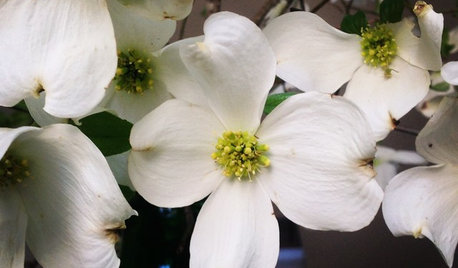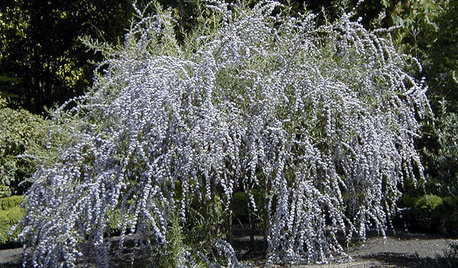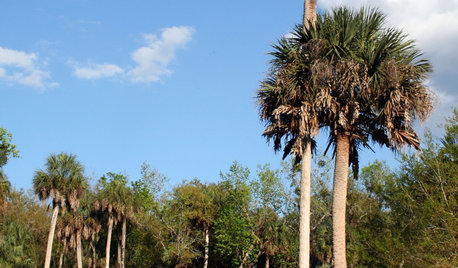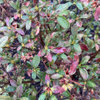Root Pruning Dogwoods and Sambucus
swanoir
14 years ago
Related Stories

GARDENING GUIDESGreat Design Plant: Sambucus Nigra
Common elderberry is a highly adaptable shrub from the eastern U.S., with berries galore for wildlife and humans alike
Full Story
GARDENING GUIDESGreat Design Plant: Cornus Florida Benefits Wildlife
Flowering dogwood provides fiery red foliage in fall and beautiful springtime blooms
Full Story
FALL GARDENING6 Trees You'll Fall For
Don’t put down that spade! Autumn is the perfect time for planting these trees
Full Story
ARBOR DAY8 Reasons to Plant a Great Tree
Beauty is its own reward, but the benefits of planting the right tree in the right place go way beyond looks
Full Story
LANDSCAPE DESIGNPretty Trees for Patios, Paths and Other Tight Spots
Choose trees for their size, shape and rate of growth — or shape them to fit your space. Here's how to get started
Full Story
GARDENING GUIDES5 Best-Behaved Trees to Grace a Patio
Big enough for shade but small enough for easy care, these amiable trees mind their manners in a modest outdoor space
Full Story
GARDENING GUIDES9 Low-Growing Hedges That Make Good Neighbors
Define garden areas or borders without blocking the view, with these evergreen shrubs that take kindly to trimming
Full Story
GARDENING AND LANDSCAPINGVase Shapes Set Shrubs Apart
Billowing on top and slender on the bottom, shrubs in a vase shape showcase blooms and foliage to perfection in the landscape
Full Story
LANDSCAPE DESIGNThe Unparalleled Power of Trees
Discover the beauty and magic of trees, and why a landscape without them just isn't the same
Full Story
TREESGreat Design Plant: Sabal Palm Enchants in Balmy Sites
Towering and tolerant, this tree blends in, stands out and happily stars in vacation photos
Full Story








gardengal48 (PNW Z8/9)
ken_adrian Adrian MI cold Z5
Related Professionals
Waunakee Landscape Architects & Landscape Designers · Euclid Landscape Contractors · Paterson Landscape Contractors · Spring Landscape Contractors · West Coon Rapids Landscape Contractors · Shenandoah Landscape Contractors · Clarksburg Window Contractors · Idylwood Window Contractors · Milwaukee Window Contractors · San Ramon Window Contractors · Concord Driveway Installation & Maintenance · Ashland Decks, Patios & Outdoor Enclosures · Boone Decks, Patios & Outdoor Enclosures · Brentwood Decks, Patios & Outdoor Enclosures · Conroe Decks, Patios & Outdoor EnclosuresEmbothrium
chrsvic
Embothrium
swanoirOriginal Author
Embothrium
swanoirOriginal Author